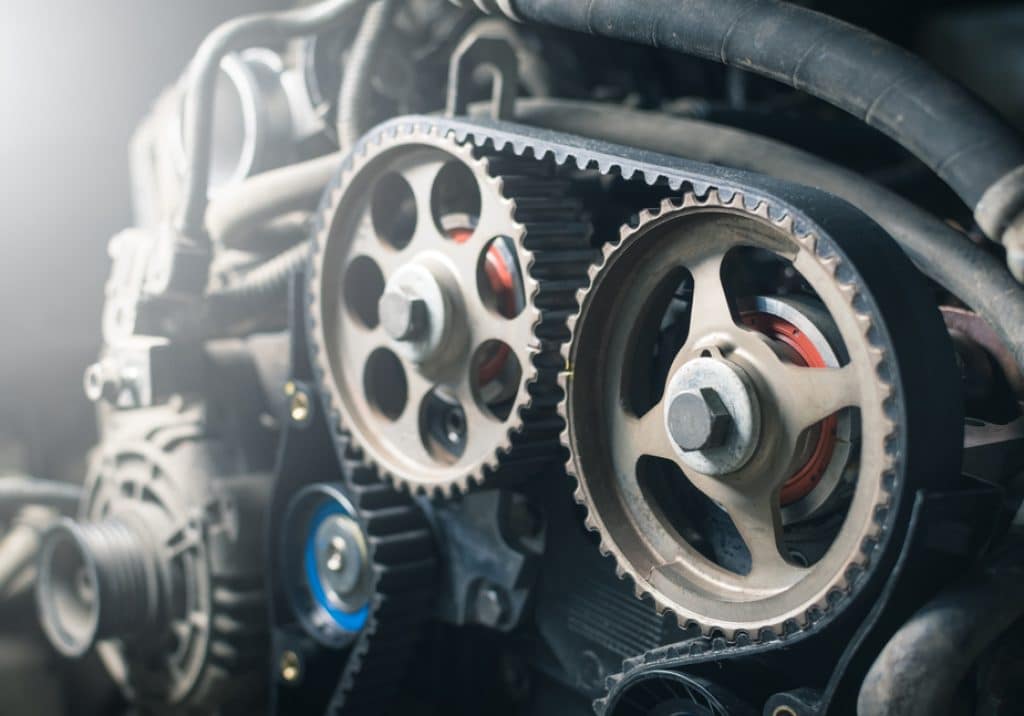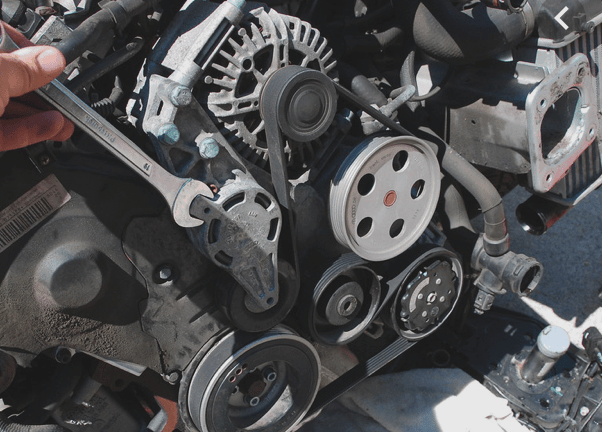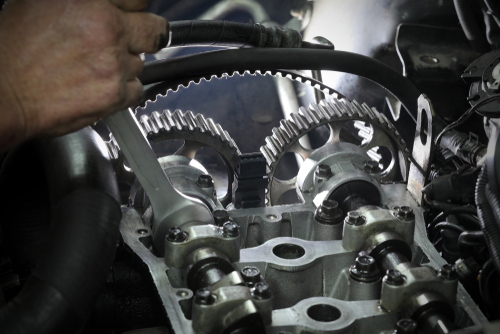Is your engine light flashing like a disco ball? You might be dealing with the pesky P0015 code. This error indicates your camshaft timing is off, specifically that it’s over-retarded on Bank 1.
Don’t worry, it’s not as scandalous as it sounds!

When your car’s computer detects this issue, it’s essentially saying, “Hey, the exhaust camshaft on Bank 1 is lagging behind schedule!”
This timing mishap can lead to poor engine performance, reduced fuel efficiency, and even potential engine damage if left unchecked.
It’s like your engine’s trying to dance but keeps tripping over its own feet.
You might notice symptoms like rough idling, decreased power, or that annoying check engine light staring you down.
But fear not! With a bit of detective work and some elbow grease, you can get to the bottom of this P0015 conundrum and have your ride purring like a kitten again.
Key Takeaways
- P0015 indicates an over-retarded camshaft timing on Bank 1, affecting engine performance
- Symptoms may include rough idling, decreased power, and an illuminated check engine light
- Proper diagnosis and timely repair can prevent further engine damage and restore optimal performance
Understanding the P0015 Code
Hey there, fellow gearhead! Let’s dive into the mysterious world of the P0015 code. It’s like your car’s way of saying, “Hey, something’s not quite right with my timing!”
This pesky little code is all about your engine’s camshaft position.
Specifically, it’s telling you that the exhaust camshaft on Bank 1 (that’s usually the side with cylinder #1) is running a bit behind schedule. Talk about being fashionably late!
Your car’s Engine Control Module (ECM) is like a strict teacher. When it notices the camshaft timing is off, it throws a fit and lights up your dashboard. That’s when you see this diagnostic trouble code (DTC) pop up.
Now, you might be wondering, “What’s the big deal?”
Well, when your camshaft timing is over-retarded, it’s like your engine’s dance moves are out of sync.
This can lead to poor performance, reduced fuel economy, and even engine damage if left unchecked.
Remember, P0015 is just one of many OBD-II trouble codes. It’s your car’s way of communicating with you. So next time you see it, don’t panic! Just think of it as your vehicle’s cry for a little TLC.
Symptoms of a P0015 Error

When your car’s computer throws a P0015 code, you’ll notice some telltale signs that something’s amiss under the hood. Your trusty steed might start acting up in ways that’ll make you scratch your head and reach for your wallet.
Check Engine Light and Engine Performance Issues
Your dashboard’s check engine light will likely be the first thing to catch your eye. It’s like your car’s way of saying, “Hey buddy, we need to talk.” But that’s not all – you might feel like your car’s lost its mojo.
Acceleration could become sluggish, as if your car’s suddenly developed a fear of speed. You might notice a drop in fuel economy too. It’s like your car’s developed an expensive drinking habit overnight.
In some cases, you could experience misfires. It’s as if your engine’s cylinders are playing a game of musical chairs, and one keeps losing.
Stalling and Starting Difficulties
Starting your car might become a bit of a gamble. Some days, it’ll fire up like a champ. Other days, it’ll struggle more than a teenager trying to get out of bed on a Monday morning.
Once you’re on the road, don’t be surprised if your car decides to take an impromptu nap. Stalling can occur, especially when you’re idling at a red light or stuck in traffic. It’s your car’s way of adding some unwanted excitement to your commute.
In severe cases, your car might refuse to start altogether. It’s like it’s staging a sit-in protest right there in your driveway.
Rough Idle and Unusual Engine Noises
Your engine’s smooth purr might turn into more of a grumble. At idle, it could feel like you’re sitting on a giant massage chair – but not in a good way.
Listen closely, and you might hear some new and unwelcome sounds coming from under the hood. Unusual engine noises could include ticking, knocking, or rattling. It’s like your engine’s trying to start its own percussion band.
These sounds might get louder or more frequent as you accelerate. Your once-quiet ride could start sounding like a coffee can full of angry bees. Not exactly the symphony you want to hear on your morning drive.
Common Causes and Diagnostics

Got a P0015 code lighting up your dash? Don’t worry, we’ll get to the bottom of this camshaft conundrum. Let’s dive into the main culprits behind this pesky problem and how you can play detective with your engine.
Faulty Camshaft Position Sensor
Your camshaft position sensor is like a nosy neighbor – always watching what’s going on. When it goes bad, your engine gets confused.
Camshaft position sensors can fail due to electrical issues or physical damage. Look for signs like rough idling, stalling, or poor acceleration.
To diagnose, you’ll need a trusty scan tool. Check for any related codes and live data from the sensor. If the readings are off, it’s time for a replacement.
Remember, a faulty sensor can throw off your entire engine timing. It’s like trying to dance when the DJ’s record is skipping!
Oil Flow Problems
Oil is the lifeblood of your engine, and when it’s not flowing right, things get sticky – literally!
Low oil levels or poor quality oil can cause the P0015 code. Check your dipstick and top up if needed. If you’re due for an oil change, now’s the time.
Clogged oil passages are another sneaky culprit. They’re like clogged arteries, but for your car. A good engine flush might clear things up.
Don’t forget about oil pressure. If it’s low, your VVT system might not have enough oomph to do its job properly.
Variable Valve Timing (VVT) System Issues
The VVT system is like a conductor, keeping all your engine’s parts in harmony. When it’s out of tune, you get the P0015 symphony.
A common troublemaker is the oil control valve (OCV). This little gizmo controls oil flow to the VVT system. If it’s stuck or clogged, your camshaft timing goes haywire.
To check the OCV, you might need to get a bit dirty. Look for oil leaks or strange noises coming from the valve. A multimeter can help you test its electrical resistance.
Timing chain wear can also cause VVT problems. If you hear a rattling noise from your engine, it might be time for a new chain. It’s like replacing the belt on your pants – sometimes you just need a new one to keep everything in place!
Step-by-Step Repair Guide
Fixing P0015 often involves addressing sensor issues, VVT system problems, or oil flow complications. Let’s dive into the nitty-gritty of getting your engine back in sync.
How to Replace a Faulty Sensor
First things first, you’ll want to locate that pesky camshaft position sensor. It’s usually nestled near the engine block or cylinder head.
Got your wrenches ready? Good!
Disconnect the battery – safety first, folks! Now, unplug the sensor’s electrical connector. It might fight you a bit, but be gentle. You’re not in a wrestling match here.
Time to remove the old sensor. It’s probably held in place by a bolt or two.
Out with the old, in with the new! When installing the replacement, make sure it’s seated properly. You don’t want it doing the cha-cha while you’re cruising down the highway.
Reconnect everything and clear that OBD code. Voila! You’re one step closer to automotive bliss.
Addressing VVT System Malfunctions
VVT issues got you down? Don’t sweat it!
Start by checking the oil control valve (OCV). This little gizmo controls oil flow to the camshaft phaser.
If it’s clogged or faulty, your timing will be off faster than a cheap watch.
Clean it if you can, replace it if you must. It’s usually held in place by a couple of bolts – nothing your trusty socket set can’t handle.
Next up, inspect the camshaft phaser itself. If it’s sticking or worn, it’s time for a replacement.
This job might be a bit trickier, so don’t be ashamed to call in the cavalry (aka a professional mechanic) if you’re not comfortable.
Remember, a smooth-running VVT system is key to keeping that P0015 code at bay.
Solving Oil Flow Issues
Oil flow problems can turn your engine into a grumpy old man.
Start with the basics – check your oil level and quality. If it looks like tar, it’s time for an oil change, pronto!
Inspect the oil passages to the camshaft. They can get clogged faster than your sink on Thanksgiving. A good engine flush might do the trick, but be careful – you don’t want to dislodge any debris and send it on a grand tour of your engine.
Don’t forget about the timing chain tensioner. If it’s not getting enough oil, it can cause all sorts of timing headaches. Replace it if it’s worn or damaged.
Lastly, consider using a high-quality oil that meets your vehicle’s specifications. Your engine will thank you with purrs of contentment and fewer P0015 codes.
Cost and Prevention
Dealing with P0015 can hit your wallet hard, but there are ways to avoid it. Let’s break down the costs and explore some preventive measures to keep your engine purring.
Breaking Down the Expense
Fixing P0015 can make your credit card weep. The price tag varies depending on the root cause, but it’s never cheap.
If you’re lucky, it might just be a simple oil change costing around $50-$100. But don’t count your chickens yet!
A faulty camshaft position actuator? That’ll set you back $300-$500. And if you need a new timing chain? Brace yourself for a $1000-$2000 hit.
Labor costs can add another $200-$500 to your bill. Ouch!
Remember, ignoring the problem can lead to engine damage, and that’s when things get really expensive.
Routine Maintenance to Avoid P0015
Prevention is cheaper than cure, folks! Regular maintenance can save you from the P0015 headache.
First off, keep that engine oil fresh. Change it every 3,000-5,000 miles or as your manual suggests.
Dirty oil is your engine’s worst enemy.
Check your oil level regularly. Low oil pressure can cause timing issues faster than you can say “P0015”.
Use high-quality oil that meets your vehicle’s specifications. Your engine will thank you with improved fuel economy and fewer codes.
Listen to your engine. Strange noises? Don’t ignore them.
A stitch in time saves nine, especially when it comes to engines.
Finally, don’t skip those scheduled maintenance checks. They’re your best defense against costly repairs and that pesky P0015 code.
Frequently Asked Questions
The P0015 code can be a real head-scratcher for car owners. Let’s dive into some common queries about this tricky trouble code and what it means for your beloved vehicle.
What joyride awaits if one ignores the P0015 code capsule in their metal steed?
Ignoring P0015 is like ignoring your doctor’s orders – it’ll come back to bite you.
Your engine might start sounding like a broken blender, and your fuel economy could tank faster than your hopes of winning the lottery.
Worst case? You could be looking at some serious engine damage. So, don’t be a hero – get it checked out pronto!
Should you think about taking a second mortgage to fix the P0015 error, or is the repair bill not as scary as it sounds?
Good news, folks! Fixing P0015 won’t require you to sell a kidney.
In most cases, it’s just a matter of replacing a faulty camshaft position actuator or cleaning out some gunky oil passages.
You might be looking at a few hundred bucks, give or take. But hey, that’s cheaper than a new engine, right?
In the saga of P0015 and the great Toyotas, what twist does the plot take?
Ah, Toyotas – the cockroaches of the car world. They just keep on ticking!
But even these reliable beasts can fall victim to P0015. The culprit is often a faulty VVT system.
Toyota’s fix usually involves replacing the oil control valve or giving the engine a good old-fashioned oil change.
Nothing too dramatic, just like a typical Toyota.
When it comes to the mystical P0015 on a BMW, what sort of wizardry is required for the fix?
BMWs and P0015? It’s like oil and water – they just don’t mix well.
These German engineering marvels often need a bit more TLC when it comes to this code.
You might be looking at replacing the VANOS solenoid or even the entire VANOS unit.
It’s not rocket science, but it might feel like it when you see the bill!
How does one go about charming the P0015 code on that temperamental Ford back into the lamp?
Fords are like that friend who’s always up for an adventure – sometimes it’s fun, sometimes it’s trouble.
With P0015, start by checking the oil level and condition.
If that doesn’t do the trick, you might need to replace the variable camshaft timing solenoid.
It’s not as scary as it sounds, I promise!
Is P0015 playing the harbinger of doom, or can this mechanical soothsayer’s prophecy be taken with a pinch of salt?
P0015 isn’t the end of the world, but it’s not exactly a party invitation either.
It’s more like a stern warning from your engine that something’s not quite right.
Ignore it, and you could be looking at reduced fuel economy, poor engine performance, or even engine damage.
So take it seriously, but don’t panic. Your trusty mechanic has seen worse!
